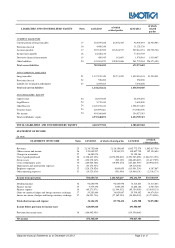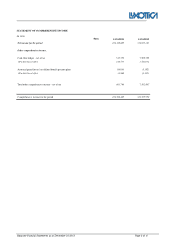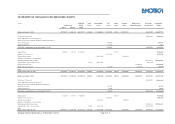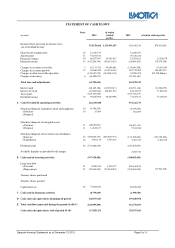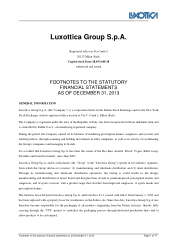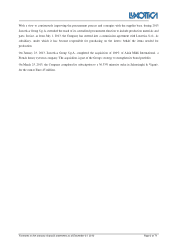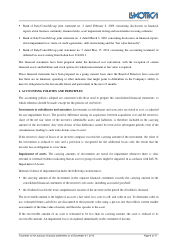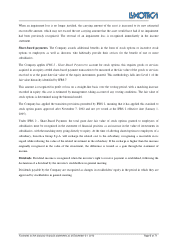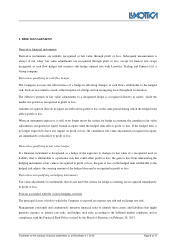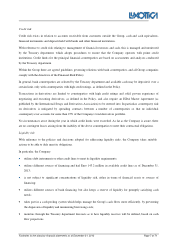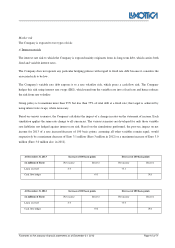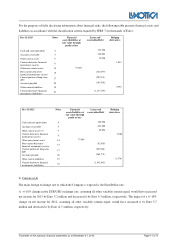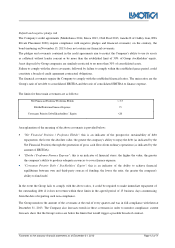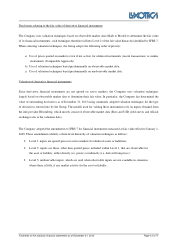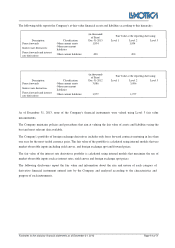LensCrafters 2013 Annual Report Download - page 171
Download and view the complete annual report
Please find page 171 of the 2013 LensCrafters annual report below. You can navigate through the pages in the report by either clicking on the pages listed below, or by using the keyword search tool below to find specific information within the annual report.
Footnotes to the statutory financial statements as of December 31, 2013 Page 4 of 71
• Bank of Italy/Consob/Isvap joint statement no. 2 dated February 6, 2009 concerning disclosures in financial
reports about business continuity, financial risks, asset impairment testing and uncertainties in using estimates;
• Bank of Italy/Consob/Isvap joint statement no. 4 dated March 3, 2010 concerning disclosures in financial reports
about impairment tests, terms of credit agreements, debt restructuring and the "fair value hierarchy".
• Bank of Italy/Consob/Isvap joint statement no. 5 dated May 15, 2012 concerning the accounting treatment of
deferred tax assets arising from Italian Law 214/2011.
The financial statements have been prepared under the historical cost convention, with the exception of certain
financial assets and liabilities and stock options for which measurement at fair value is required.
These financial statements have been prepared on a going concern basis since the Board of Directors have assessed
that there are no financial, operating or other indicators that might point to difficulties in the Company's ability to
meet its obligations in the foreseeable future and particularly in the next 12 months.
1. ACCOUNTING POLICIES AND PRINCIPLES
The accounting policies adopted are consistent with those used to prepare the consolidated financial statements, to
which reference should be made, except for the policies set out below:
Investments in subsidiaries and associates. Investments in subsidiaries and associates are stated at cost, as adjusted
for any impairment losses. The positive difference arising on acquisition, between acquisition cost and the investor's
share of the net fair value of the investee's identifiable assets and liabilities, is therefore included in the carrying
amount of the investment. Any write-downs of this difference cannot be reversed in subsequent periods even if the
circumstances leading to such write-downs cease to exist.
If the investor's share of losses of an investee company exceeds the carrying amount of the investment, the value of
the investment is reduced to zero and a provision is recognized for the additional losses only the extent that the
investor has an obligation to cover them.
Impairment of assets. The carrying amounts of investments are tested for impairment whenever there is clear
external or external evidence indicating that an asset or group of assets might be impaired, in accordance with IAS 36-
Impairment of Assets.
Internal evidence of impairment includes the following circumstances:
• the carrying amount of the investment in the separate financial statements exceeds the carrying amount in the
consolidated financial statements of the investee's net assets, including associated goodwill;
• the dividend exceeds the total comprehensive income of the investee in the period the dividend is declared.
The recoverable amount is the higher of an asset’s fair value, less costs to sell, and value in use. To determine value in
use, estimated future cash flows are discounted to their present value using a pre-tax rate that reflects current market
assessments of the time value of money and the risks specific to the asset.
If the recoverable amount of an asset is estimated to be less than its carrying amount, the asset is reduced to its
recoverable amount. An impairment loss is recognized immediately in the statement of income.



